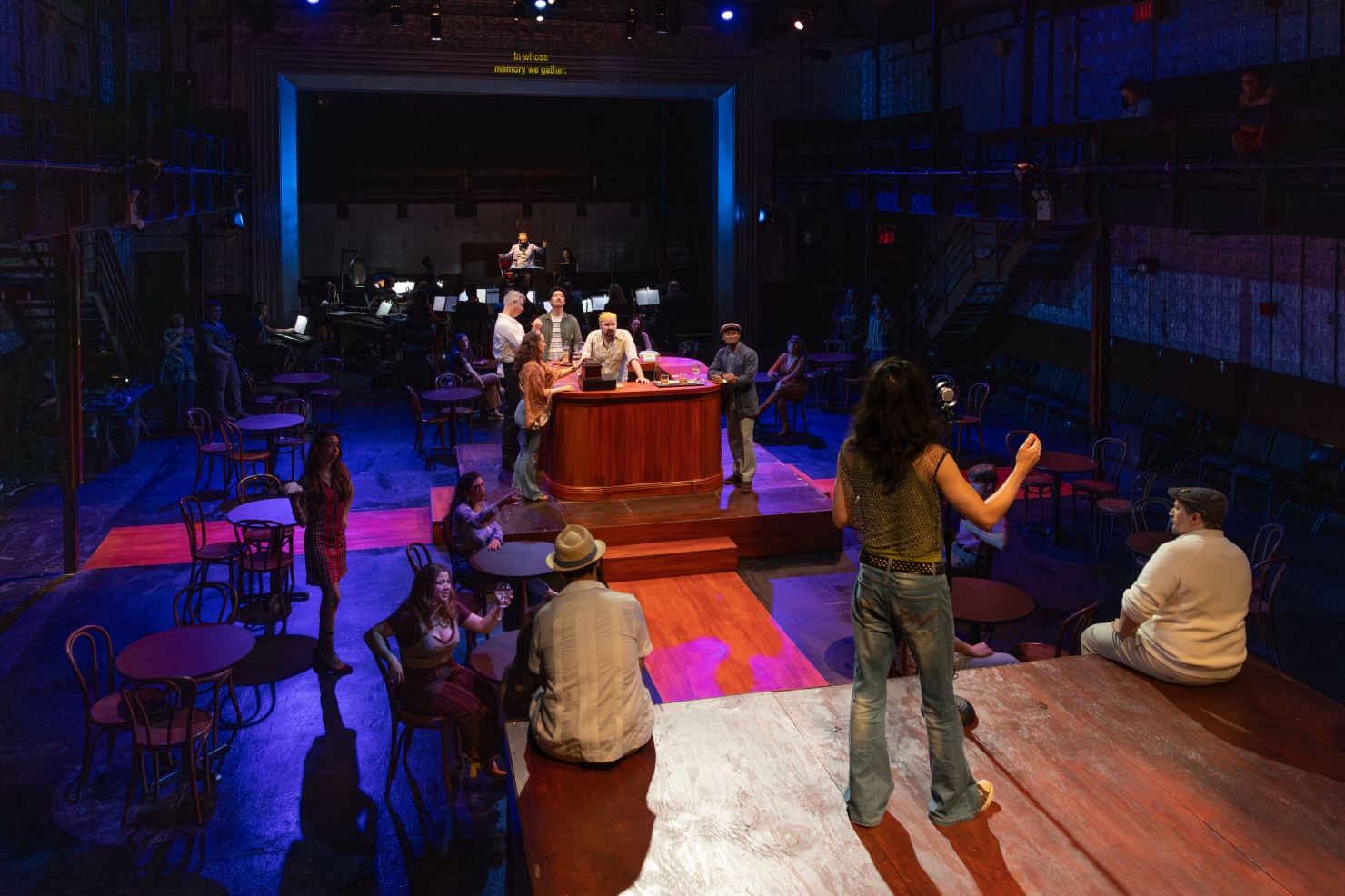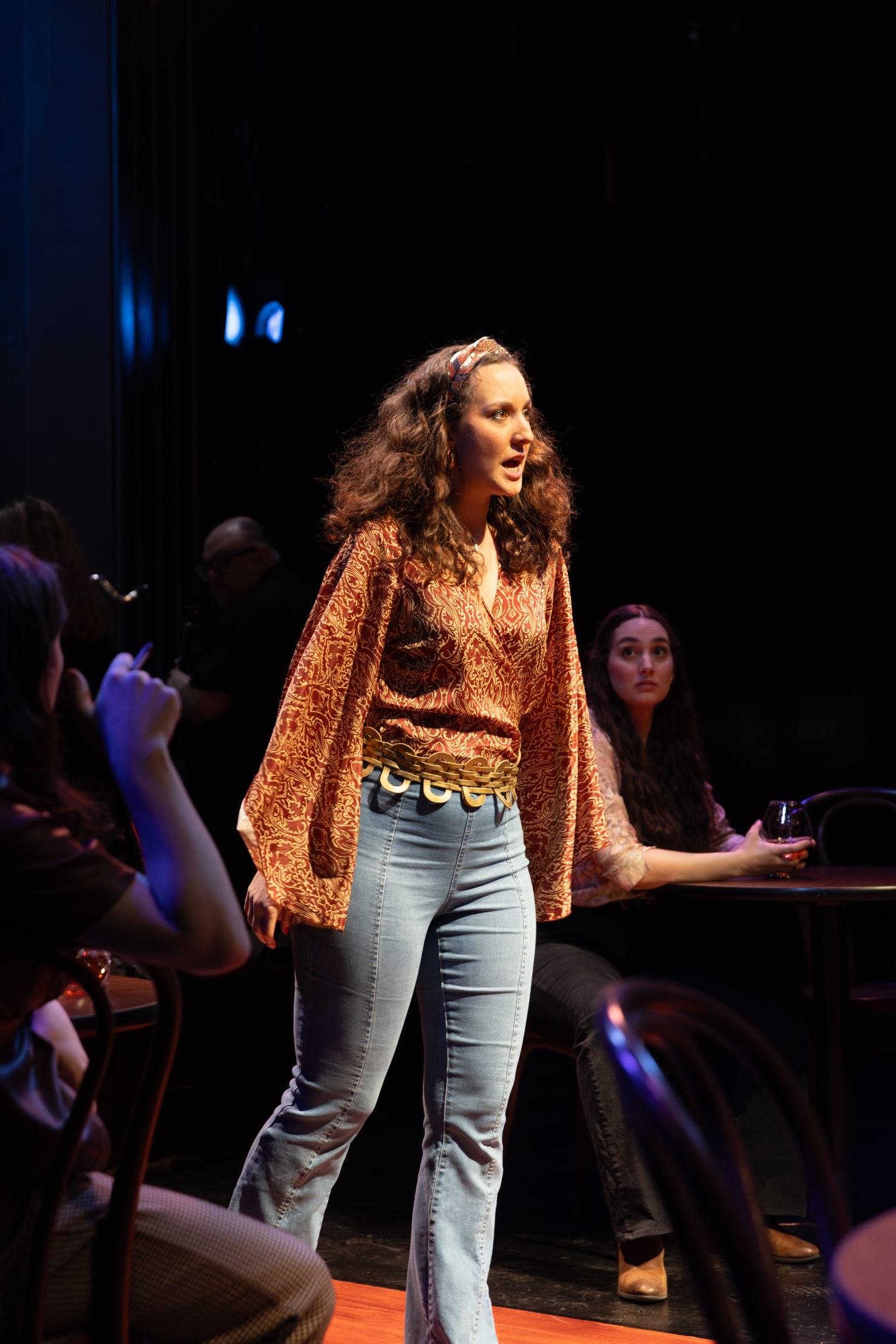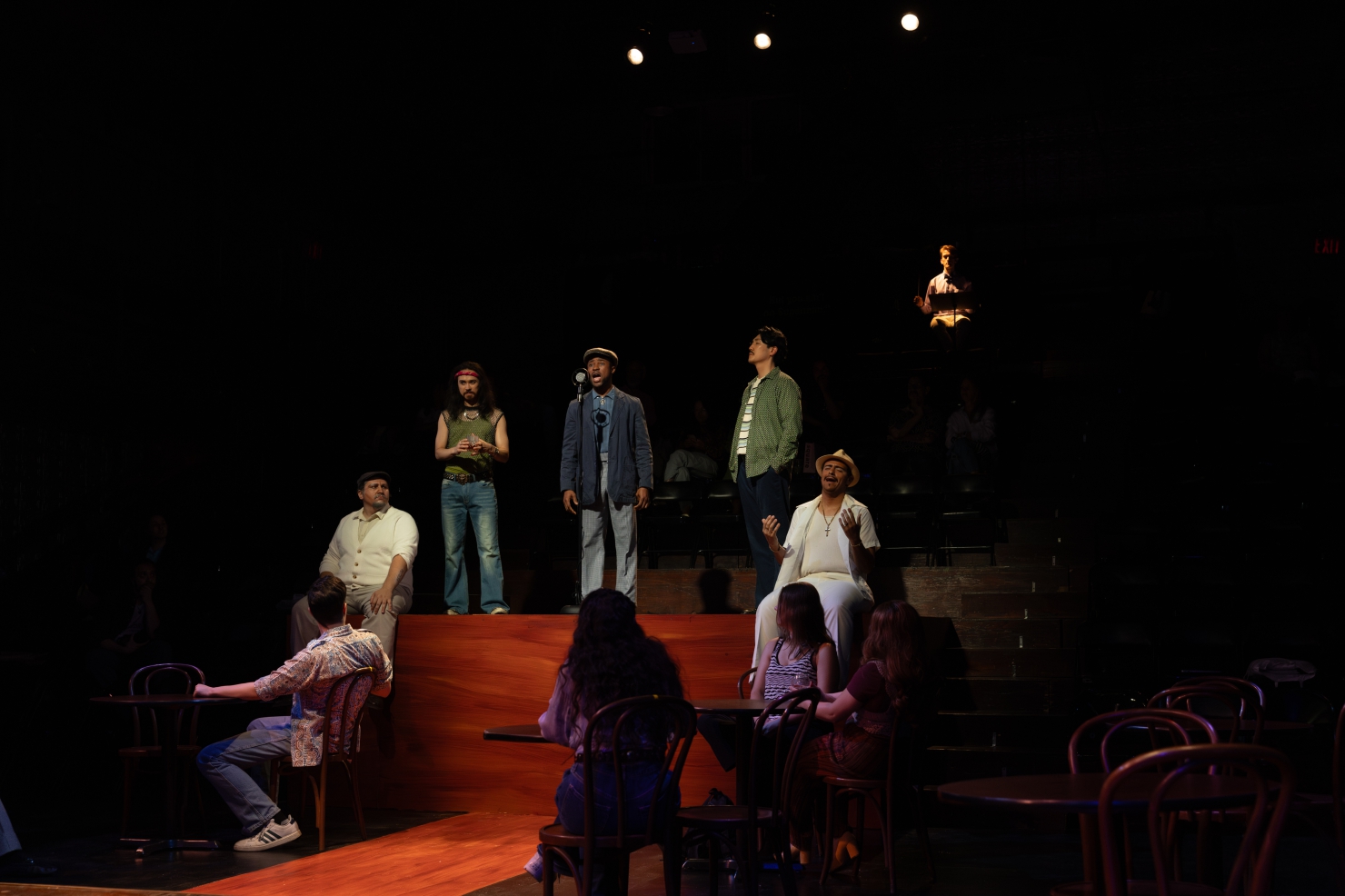
The Tin Angel: Le jazz cold
ReviewThe marriage of opera and jazz can be satisfying and successful –- works by Gershwin, Weill, Krenek and William Grant Still (Highway 1, U.S.A., reviewed here in 2023) – to name a few. The Tin Angel, presented by Teatro Grattacielo can’t be added to this list, and a great musical opportunity has been missed here. Even though the entire opera takes place in a jazz nightclub, inexplicably there is virtually no jazz music.
The score by Daniel Asia takes us nowhere for 100 minutes via a meandering modern recitative, tuneless except for the bizarre interpolation of Rodgers and Hammerstein’s “My Favorite Things”, which, should be noted, is from the very un-jazzy Broadway show The Sound of Music.
There are constant references to jazz music –- this is, after all, a jazz nightclub – and yet the piece is devoid of jazz until literally the last minute and then for only a moment before the final blackout. There is anticipation that is built throughout that there will soon arrive “the last living member of the Charlie Mingus group” to play a gig at the club, yet no soulful sax, muted trumpet or double bass a la Mingus, either up front or in the underscoring.

It’s a promising premise that is quickly lost. The libretto, by the late Paul Pines, is based on his novel of the same name, and was loosely based on the real-life jazz club that he owned in the 1970s called Tin Palace. Fun fact – The Tin Angel, staged at La MaMa on East 4th street in Manhattan’s East Village, is merely walking distance from where the Tin Palace existed on Bowery Street.
There is much to like about the story and the lyrics. The Tin Angel has all the pulpy elements needed to keep the audience interested for the intermission-free program. There are Damon Runyon-esque street characters with names like Caviar Henry, Diamond Jim and Black Hattie. There are several whodunnits that need to be solved – a couple of murders, a drug deal gone bad resulting in a severed nose(!), a robbery, etc. – and then there’s a mysterious note and three cryptic letters that need to be decoded. There are a number of poetic and paradoxical lines like “the roar of butterfly wings” and “the sound of a card turning.”

The performances are uniformly outstanding. Italianate tenor Spencer Hamlin stars as Pablo, the owner of the nightclub, and soprano Victoria McGrath as his lover Maria, both maintaining beautiful voices even as they take us through the winding plot of their characters’ grief, fear and confusion. Mezzo Chantelle Grant is formidable as gangster Black Hattie who keeps us guessing whether she is friend or foe. Bass-baritone Daniel Klein is enigmatic as Christ, the good cop-bad cop rolled into one, while cops Logan Dooley and Ziliang Hao offer some comic relief. Special mentions to the extraordinary basso profundo Michael Appiah Kubi Mensah as the criminally insane man-child Babar and baritone Zachary Angus as the slightly less-insane Caviar Henry. Henry Hyunsoon Kim, Chisom Maduakor, Jordan Rutter-Covatto, Rick Agster, Eugenia Forteza, and Melina Jaharis are each given their moments to shine as denizens and or workers at the bar.
Director Chloe Treat has used every available area in the notoriously limiting La MaMa runway performance area and credit her with effective staging and most, importantly, the well-grounded performances of the singers. Costume designer Fan Zhang hits the bullseye with what was considered cool in 1971. The detective Christ dressed in a racer jacket and aviator shades, and the denizens of the bar in hippie-post-hippie attire bring authenticity to the period recreation, and touches like the wealthy Caviar Henry in a lavish kimono adds the needed eccentricity.

Bravo to the 13-piece orchestra under Enrico Fagone’s baton and to the harmonic blend of the underutilized and perfunctory chorus of homeless East Villagers (turning the traditional “happy villagers” number on its head.) The big takeaway message to the audience is that we don’t appreciate the “invisible assets” of life while we pursue the obvious, tangible ones. It takes words from ‘beyond the grave’ to remind us of this fact – elucidated here by the touching performances of bass-baritones Alejandro De Los Santos and Justin Ramm-Damron as ghosts Ponce and Ben, respectively. We are told that “jazz clubs fade but the sound beneath the sound remains” – one of the “invisible assets” is the “music” that the departed leave behind. A lovely idea, in theory. In this case, though, the “sound beneath the sound” is not only “invisible” but, like the non-existent jazz, inaudible.


Comments